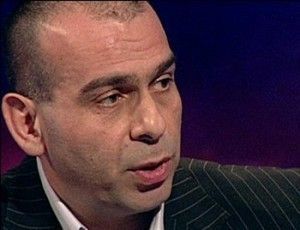May 05, 2017
By Potkin Azarmehr
Iran’s next presidential elections are scheduled to be held on 19th May. Iranians are given a choice of six candidates to choose from for the next president of the Islamic Republic of Iran. The question I am often asked these days is ‘who will be the next president of Iran? Will Rouhani have a second term or will it be one of the other five candidates?’

Islamic Republic of Iran is a unique system of governance with no precedence in history prior to 1979. It is the first time the Shia clerics experience running the government and there is currently no other similar form of governing a country anywhere else in the world.
It is therefore important to understand how this unique system of governance works and not to assume this is a presidential elections similar to what takes place elsewhere.
Iran’s unelected body, the Guardian Council, does not have to disqualify the presidential candidates. Unlike the Majlis or the Assembly of Experts elections, the twelve members of the Guardian Council, do not disqualify candidates but look at the list of those who have registered themselves and decides which ones would be suitable in the present circumstances to be the next head of the executive power.

The shortlisted candidates are said to have ‘obtained qualification’ and not ‘have been disqualified’. The Guardian Council therefore does not have to give any reason or explanation as to why a candidate was not shortlisted.
Those shortlisted by the Guardian Council are deemed to be the most competent and suitable to be the next president of the Islamic Republic of Iran and ensure the interests of the establishment given the internal and external global situation at the time.
Even after the votes have been counted, the candidate who is said to have obtained the most votes does not become the president of Iran until the Supreme Leader endorses the people’s votes, a process known as Tanfeez.
Abdul-Karim Lahiji, one of the authors of the first draft of the constitution of the Islamic Republic, explained Tanfeez to me with the following example:
‘Imagine a property is owned by a person of not sound mind and it is sold by others on his behalf. The judge looking at such a contract may decide that although the sellers were not legally entitled to sell the property but what they have done is in the best interest of the owner and therefore the sale can be endorsed. Similarly the electorate, regarded as minors, do not have the legal mandate to choose the next president but the Supreme Leader, the guardian, endorses their choice”.
So despite all the controls that is applied to ensure the elected president is within the circle of approved insiders, Tanfeez is provisioned to ensure a further safety catch is applied and the office of the presidency does not get occupied by someone who can be a menace to the establishment.
Even after the president is endorsed, the Supreme Leader or the ultimate jurisprudence, can decide the president is not acting according to the Islamic tenets and in the interests of the regime and remove him from power anytime during his presidency.
After the voters have selected the candidate from the initial approved list and their chosen candidate is endorsed by the Supreme Leader, the new president reads the oath of presidency which pledges to protect the establishment of the Islamic Republic:
“I as the president, swear by the holy Koran and before the people of Iran that I will protect the official religion [Shia Islam] of the country, the establishment of the Islamic Republic and its constitution…”
He then has up to two weeks to recommend his ministers for the approval by the Majlis deputies.
Four key Ministries must be with the recommendation or approval of the Supreme Leader. These are Defence, Interior, Intelligence and Foreign Ministers. The Justice Minister must also be from a list of names recommended by the head of the judiciary, who himself is appointed by the Supreme Leader.
Now lets go back to the original question, “who will be Iran’s next president?”
The most appropriate answer is “does it really matter?” The Supreme Leader will decide the major policies and the Supreme Leader will ensure the president does not step out of line.
The primary concern of the establishment is the number of people turning up to vote. A huge turnout is crucial to the regime to claim legitimacy. The international public opinion and the media will not delve into the intricacies of how an Iranian president is “elected” but what the pictures at polling stations suggest.
To achieve a large turnout, the regime has resorted to many tactics. One is the ‘good cop/bad cop’ scenario of forcing the people to resign themselves into choosing the bad candidate over the worse candidate. The other is to hold the municipality elections on the same day as the presidential elections.

Who will know the people queuing up to vote are voting for the next president or for their next representatives in the municipality? The important thing is pictures of the electorate are published in the media. The genius of the Islamic Republic is that it has marketed this controlled limited selection as some sort of election to the outside world to claim its legitimacy.

